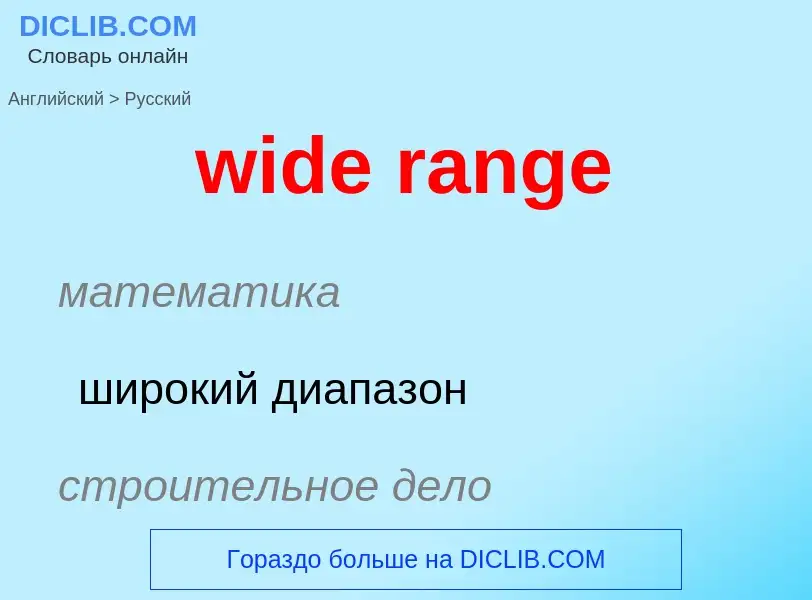Tradução e análise de palavras por inteligência artificial ChatGPT
Nesta página você pode obter uma análise detalhada de uma palavra ou frase, produzida usando a melhor tecnologia de inteligência artificial até o momento:
- como a palavra é usada
- frequência de uso
- é usado com mais frequência na fala oral ou escrita
- opções de tradução de palavras
- exemplos de uso (várias frases com tradução)
- etimologia
wide range - tradução para russo
математика
широкий диапазон
строительное дело
широкий ассортимент (напр. изделий)
Definição
Wikipédia
.jpg?width=120)
In photography and videography, multi-exposure HDR capture is a technique that creates extended or high dynamic range (HDR) images by taking and combining multiple exposures of the same subject matter at different exposure levels. Combining multiple images in this way results in an image with a greater dynamic range than what would be possible by taking one single image. The technique can also be used to capture video by taking and combining multiple exposures for each frame of the video. The term "HDR" is used frequently to refer to the process of creating HDR images from multiple exposures. Many smartphones have an automated HDR feature that relies on computational imaging techniques to capture and combine multiple exposures.
A single image captured by a camera provides a finite range of luminosity inherent to the medium, whether it is a digital sensor or film. Outside this range, tonal information is lost and no features are visible; tones that exceed the range are "burned out" and appear pure white in the brighter areas, while tones that fall below the range are "crushed" and appear pure black in the darker areas. The ratio between the maximum and the minimum tonal values that can be captured in a single image is known as the dynamic range. In photography, dynamic range is measured in exposure value (EV) differences, also known as stops.
The human eye's response to light is non-linear: halving the light level does not halve the perceived brightness of a space, it makes it look only slightly dimmer. For most illumination levels, the response is approximately logarithmic. Human eyes adapt fairly rapidly to changes in light levels. HDR can thus produce images that look more like what a human sees when looking at the subject.
This technique can be applied to produce images that preserve local contrast for a natural rendering, or exaggerate local contrast for artistic effect. HDR is useful for recording many real-world scenes containing very bright, direct sunlight to extreme shade, or very faint nebulae. Due to the limitations of printing and display contrast, the extended dynamic range of HDR images must be compressed to the range that can be displayed. The method of rendering a high dynamic range image to a standard monitor or printing device is called tone mapping. This method reduces the overall contrast of an HDR image to facilitate display on devices or printouts with lower dynamic range.

.jpg?width=200)


![An 1856 photo by [[Gustave Le Gray]] An 1856 photo by [[Gustave Le Gray]]](https://commons.wikimedia.org/wiki/Special:FilePath/Gustave Le Gray - Brig upon the Water - Google Art Project.jpg?width=200)


















